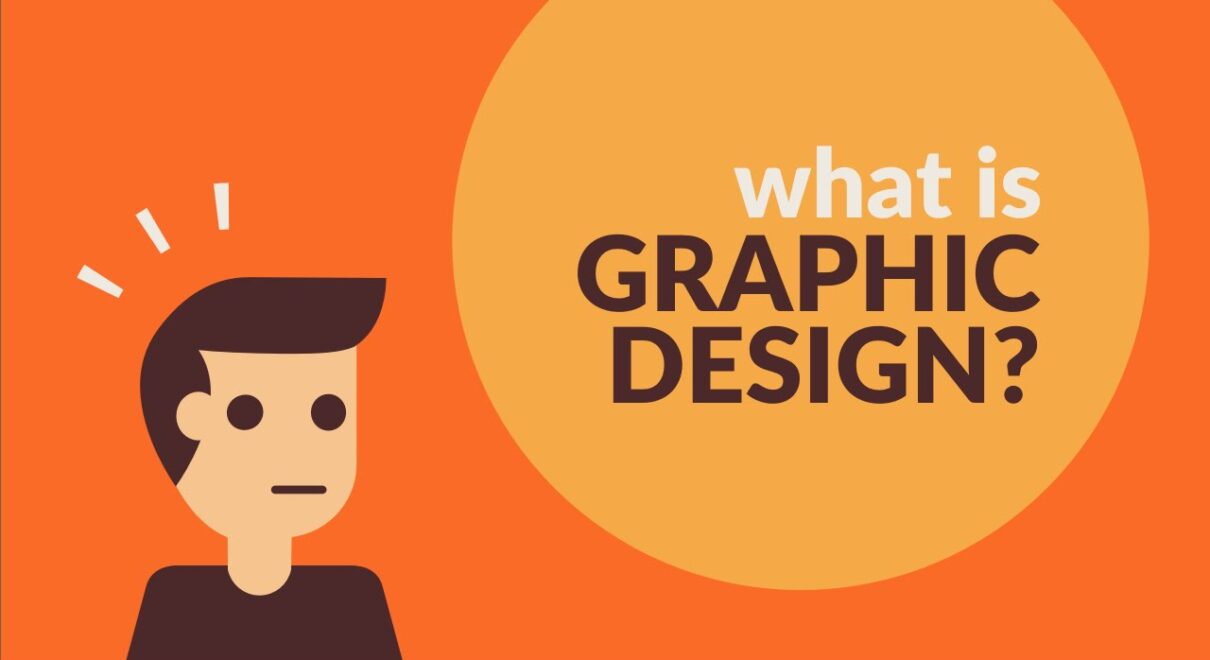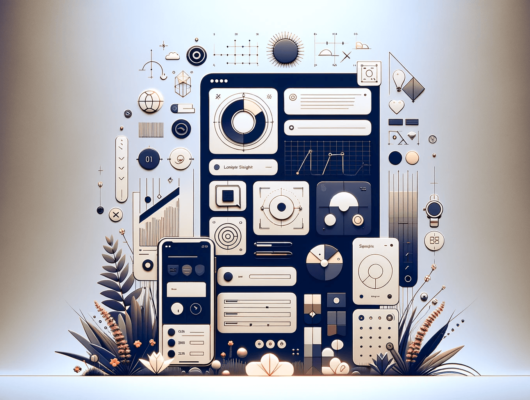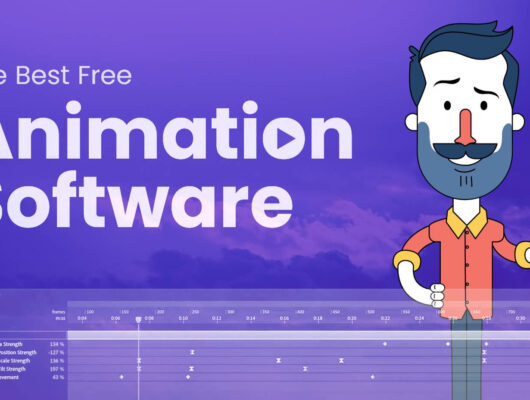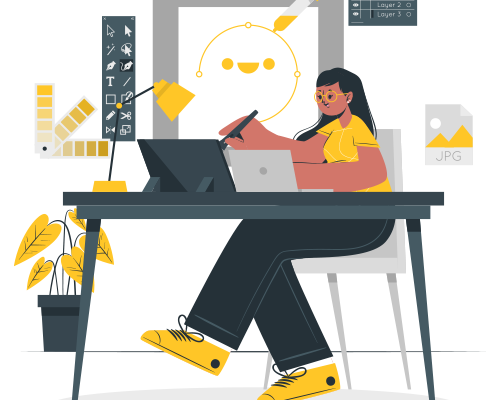Graphic design is a craft where professionals create visual content to communicate messages. By applying visual hierarchy and page layout techniques, designers use typography and pictures to meet users’ specific needs and focus on the logic of displaying elements in interactive designs, to optimize the user experience.
- What is Graphic Design?
- Graphic Design is about Molding the User Experience Visually
- Graphic Design is Emotional Design
- Learn More about Graphic Design
- Questions related to Graphic Design

Graphic Design is about Molding the User Experience Visually
Graphic design traces back to ancient times, evolving from cave paintings to a 1920s print industry term. It encompasses diverse activities, including logo creation, emphasizing aesthetics and marketing. In user experience (UX) design, graphic designers justify choices with a human-centered approach, prioritizing user empathy. While aesthetics matter, they serve usability in UX design, contrasting art for art’s sake. This leads graphic designers to venture into visual design, focusing on:
- Understanding specific user needs
- Crafting visually appealing yet functional designs
- Consider the information architecture of your interactive designs, to ensure accessibility for users.
- Leverage graphic design skills to create work that considers the entire user experience, including users’ visual processing abilities.
For instance, if an otherwise pleasing mobile app can’t offer users what they need in several thumb-clicks, its designer/s will have failed to marry graphic design to user experience. The scope of graphic design in UX covers the creation of beautiful designs that users find highly pleasurable, meaningful and usable.
“Design is a solution to a problem. Art is a question to a problem.”
— John Maeda, President of Rhode Island School of Design
Graphic Design is Emotional Design
In the digital landscape, designing with interactive software is essential, yet graphic design remains rooted in timeless principles. Its paramount role lies in striking an immediate connection with users—a synergy known as emotional design. As a graphic designer, you’re tasked with mastering color theory, understanding the pivotal role color schemes play. Colors must align not only with brand identity (e.g., blue conveys trust in banking) but also user expectations (e.g., red for alerts, green for go-ahead notifications).
Your design approach should keenly consider how each element resonates with the desired tone (e.g., using sans-serif fonts for an upbeat vibe). Crafting designs goes beyond individual elements; it’s about orchestrating an emotional journey, guiding users from landing pages to compelling calls to action. Motion design, especially for smaller screens, often engages graphic designers. They meticulously ensure their aesthetics align with user expectations, enhancing usability in a seamless, flowing experience. By foreseeing user needs and mindsets, designers can craft designs that resonate psychologically, creating an engaging and intuitive user journey.
it’s important to stay focused on some especially weighty graphic design considerations, namely these:
- Symmetry and Balance (including symmetry types)
- Flow
- Repetition
- Pattern
- The Golden Ratio (i.e., proportions of 1:1.618)
- The Rule of Thirds (i.e., how users’ eyes recognize good layout)
- Typography (encompassing everything from font choice to heading weight)
- Audience Culture (regarding color use—e.g., red as an alert or, in some Eastern cultures, a signal of good fortune—and reading pattern: e.g., left to right in Western cultures)
Overall, your mission—as far as graphic design goes in UX and UI design—is to display information harmoniously. You should ensure that beauty and usability go hand in hand, and therefore your design can discreetly carry your organization’s ideals to your users. When you establish a trustworthy visual presence, you hint to users that you know what they want to do – not just because you’ve arranged aesthetically pleasing elements that are where your users expect to find them, or help them intuit their way around, but because the values which your designs display mirror theirs, too. Your visual content will quickly decide your design’s fate, so be sure not to overlook the slightest trigger that may put users off.
Learn More about Graphic Design
Questions related to Graphic Design :
How much do graphic designers make?
The salary of a graphic designer can vary widely based on several factors, including experience, geographical location, and expertise level. On average, the annual salary for graphic designers ranges between $43,000 and $66,000. This range reflects the earnings of many professionals in the graphic design field, a profession that remains essential and valued across various industries.
While graphic design offers a respectable salary, professionals seeking higher earning potential might transition to UX design. UX designers responsible for crafting user-friendly and functional digital interfaces are in high demand, leading to attractive compensation packages. For graphic designers considering a career change, transitioning to UX design can be strategic. Learn more about the benefits of this transition and how to navigate it in this detailed guide on changing your career from Graphic Design to UX Design.
What do graphic designers do?
Graphic designers are creative professionals who use their artistic skills to create visual content for various mediums. They work on projects such as designing logos, brochures, websites, and advertisements. Using various tools and software, they aim to communicate a message through their visual designs and help businesses and organizations achieve their goals.
What is the difference between graphic and visual design?
Graphic design and visual design, often used interchangeably, hold subtle differences. Both rely on design principles, color theory, typography, and layout for effective creations.
Graphic designers concentrate on communication, crafting logos and advertisements. Meanwhile, visual designers shape product experiences, focusing on website and app user interfaces. They often integrate graphic design elements to ensure consistent user experiences across touchpoints.
While graphic design has strong roots in print media, it has evolved into the digital realm. Visual designers possess a broader skill set, merging graphic design expertise with interface design understanding.
If you’re keen on mastering these design principles, delve into our visual design course. Enhance your skills to craft functional and visually striking designs.
How to become a graphic designer?
In addition to possessing a degree in graphic design or a related field, there are excellent online courses available that can provide you with all the essential visual skills you need. Platforms like Skillshare, Udemy, and Coursera offer a variety of courses focused on developing practical skills and building portfolios. These flexible and affordable courses provide a fantastic opportunity to learn graphic design and grow your skills.
If you’re interested in pivoting to interaction design, there are fantastic courses available that can help you change your career to UX or a related field. There are even tailored learning paths available to guide you in your journey. Best of luck on your chosen career path!
Is graphic design a good career?
Yes, graphic design can be a great career choice for those with a passion for creativity and design. With the rise of digital media, the demand for skilled graphic designers has grown. However, it’s important to note that the field is competitive and requires continuous learning and development of skills.
Graphic designers can work in a variety of industries, from advertising to web design, and can have a range of job titles, such as art director or multimedia designer. Overall, graphic design can be a fulfilling and rewarding career path for those willing to put in the work.
How do you learn graphic design?
Learning graphic design involves understanding design principles, mastering software, and developing a strong portfolio. Start with online courses or a design school to learn the fundamentals. Practice by creating designs and seeking feedback. Most importantly, build a strong portfolio.
Visual design and graphic design are closely entangled. If you’re interested in becoming a visual designer, consider this Visual Designer Learning Path for comprehensive courses and resources.
How to make a graphic design portfolio?
Creating a graphic design portfolio involves selecting your best work, showcasing a variety of skills, and presenting them professionally. Include high-quality images of your work, a brief description of each piece, and the process involved. Make sure to include visuals in your portfolio, as explained by Michal Malewicz, Co-founder of HYPE4.com, in this video about the importance of visuals in your UX portfolio.
Is graphic design hard?
Graphic design can be challenging, requiring creativity, attention to detail, and technical knowledge. However, like any skill, it becomes easier with practice and proper training. Don Norman explains in his video that designers, including graphic designers, need to understand the business, politics, and socio-technical systems to make meaningful changes.
What is graphic design in art?
Artistic graphic design encompasses the creation of visual elements using typography, images, and colors to effectively convey a message or provide a solution to a problem. It encompasses various disciplines like layout design, logo design, and branding.
While graphic artists create original artwork, graphic designers use these artworks and other visual elements to create designs that convey a specific message. Learn more about the differences between graphic artists and graphic designers in this article: Graphic Artist vs Graphic Designer: What’s the Difference?
What does a creative designer do?
A creative designer is responsible for creating visuals across various mediums to communicate messages effectively. They conceptualize and design graphics, layouts, and visual effects to engage target audiences. Their work includes creating logos, marketing materials, website designs, and other visual content.
They also collaborate with other team members and clients to ensure the design aligns with the overall goals and brand identity. Read more about the role of a creative designer in this article: What Does a Creative Designer Do?







